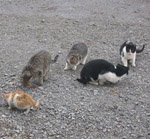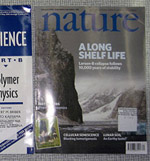Prioritizing wildlife migration routes for conservation
 Mammals,
Mammals,  Planning,
Planning,  Technology-GIS
Technology-GIS  Mule deer. Image credit, Tupper Ansel Blake.A recent study tests a method for identifying wildlife migration corridors and prioritizing them for conservation. Hall Sawyer and fellow researchers tested the method on migrating mule deer (Odocoileus hemionus) in the remote high desert of Western Wyoming where 2000 gas wells and 1609 km of pipelines and roads have been proposed for development.
Mule deer. Image credit, Tupper Ansel Blake.A recent study tests a method for identifying wildlife migration corridors and prioritizing them for conservation. Hall Sawyer and fellow researchers tested the method on migrating mule deer (Odocoileus hemionus) in the remote high desert of Western Wyoming where 2000 gas wells and 1609 km of pipelines and roads have been proposed for development.
They captured and attached GPS collars to a sample of 47 individuals from two populations. The GPS units recorded the location of an individual every two hours. The researchers then used the individual migration routes of each collared mule deer to construct population-level migration routes.
This approach helps address a complicating issue - mule deer often do not migrate in a straight A-to-B line, but rather follow a more complex network of migration routes. This method really is applicable to any migrating ungulate, but is particularly helpful in this case because it can aid stakeholders in identifying the highest priority migration areas for conservation.
The GPS tracking allowed the researchers to determine the amount of time that the mule deer spent in given locations. This enabled the researchers to identify travel-through areas where deer move through quickly and stopover areas where the wildlife spend more time.
From a planning perspective, human disturbance should be minimized in the vicinity of stopover points because they likely represent important foraging and resting areas where mule deer build caloric reserves before heading further along the route. The researchers were also able to identify high priority routes that were used by more than 10% of the sampled deer (they chose 10% as an arbitrary threshold for prioritization). They write,
"Our results indicate that when multiple migration routes exist, some route segments are used by a larger proportion of the population than others…The disproportionate use of migration-route segments suggests that potential impacts to migratory ungulate populations may be minimized by focusing management or conservation efforts on routes used by a large proportion of the population."
Prioritization is important because the proposed oil and gas development - if built - will have to impact certain routes. By identifying high priority migration areas, researchers can help planners minimize the impact to migrating mule deer. This goal is crucial. As the researchers note, archeological records in the area show that mule deer have been using some routes for thousands of years.
--Reviewed by Rob Goldstein
Sawyer, H., Kauffman, M., Nielson, R., & Horne, J. (2009). Identifying and prioritizing ungulate migration routes for landscape-level conservation Ecological Applications, 19 (8), 2016-2025 DOI: 10.1890/08-2034.1




Reader Comments